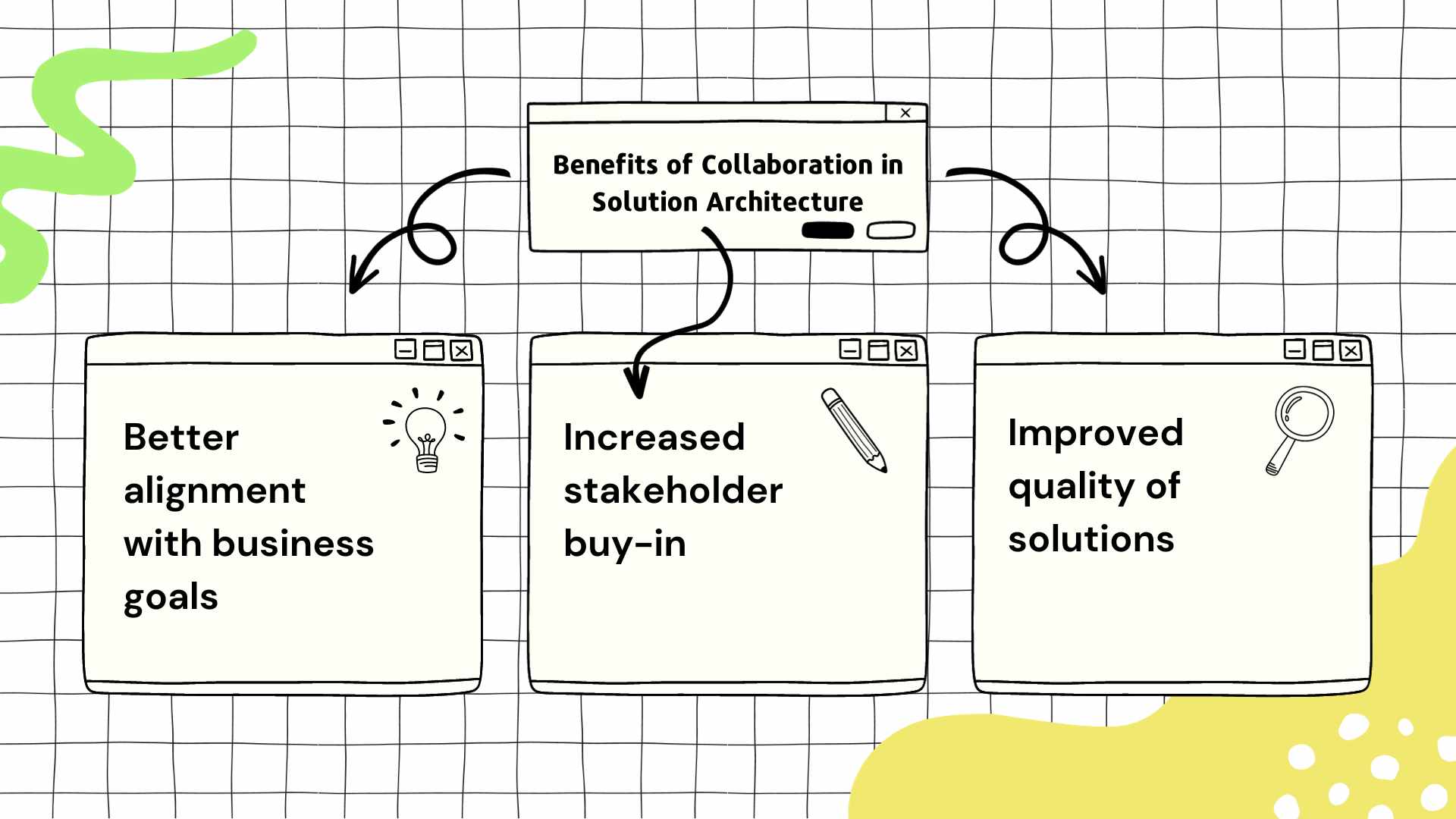Breaking Down Silos: The Importance of Collaboration in Solution Architecture
Communication and collaboration are essential for solution architects to design and implement successful solutions that meet the needs of the entire organization.
Join the DZone community and get the full member experience.
Join For FreeIn today's fast-paced digital world, businesses need to be able to adapt quickly to change in order to stay ahead of the curve. This is where digital transformation comes in. Digital transformation is the process of using technology to improve the way a business operates. Solution architects are the people who make digital transformation possible by designing and implementing the technology solutions that businesses need.
But solution architects can't do it alone. They need to be able to communicate and collaborate effectively with other stakeholders, such as enterprise architects, business owners, and technical sellers. Communication and collaboration are essential for ensuring that solutions are aligned with business goals, technically feasible, and meet the needs of all stakeholders.
Why Collaboration Is Essential in Solution Architecture
In the past, solution architects have focused on individual projects, while enterprise architects have taken a more holistic view of the company's IT landscape. This has led to some challenges and missed opportunities, as solution architects may not be aware of the broader enterprise architecture context, and enterprise architects may not be as familiar with the specific technical details of individual solutions.
A collaborative approach to solution architecture helps to bridge this gap by ensuring that solution architects and enterprise architects work together to design and implement solutions that meet the needs of the entire organization. This collaboration helps to ensure that solutions are aligned with the enterprise architecture strategy, technically feasible, and scalable to meet future needs.
The Benefits of Communication and Collaboration in Solution Architecture
Effective communication and collaboration in solution architecture can lead to a number of benefits, including:

- Better alignment with business goals: By collaborating with business owners, solution architects can ensure that their solutions are aligned with the company's overall business goals. This helps to ensure that IT investments are used to support the business and drive value.
- Reduced technical risks: Collaborating with IT professionals helps solution architects to identify and mitigate technical risks early on in the design process. This helps to avoid costly and time-consuming delays down the road.
- Improved quality of solutions: By getting feedback from other stakeholders, solution architects can improve the quality of their solutions. This feedback can help to identify and address potential problems before they become a major issue.
- Increased stakeholder buy-in: When stakeholders are involved in the solution design process, they are more likely to be supportive of the solution and committed to its success. This increased stakeholder buy-in can lead to a smoother implementation process and better overall results.
- Increased innovation: When solution architects collaborate with other stakeholders, they can bring together a wider range of perspectives and expertise. This can lead to more innovative and creative solutions.
How To Improve Communication and Collaboration in Solution Architecture
There are a few things that solution architects can do to improve communication and collaboration, including:
- Set up clear communication channels: Make sure everyone on the project knows how to reach you and each other. This could be through email, Slack, or even just a group chat.
- Talk to your stakeholders regularly: Don't just keep to yourself. Keep your stakeholders updated on the project's progress and get their feedback on the solution design.
- Use collaboration tools: There are a number of tools that can help you collaborate with your team, such as Trello, and Confluence.
- Be open to feedback: Don't be afraid to hear what your team has to say. Their feedback can help you improve the solution and make sure it meets everyone's needs.
Communication and collaboration are essential for success in solution architecture. By working together, solution architects, enterprise architects, and other stakeholders can design and implement solutions that meet the needs of the entire organization and help to achieve its business goals.
Opinions expressed by DZone contributors are their own.

Comments